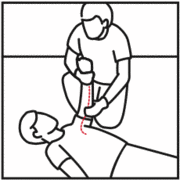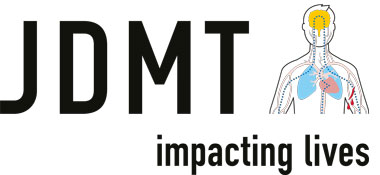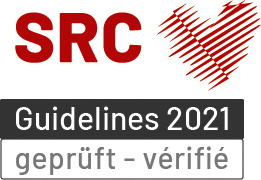Internal and external bleeding
Serious bleeding must be stopped das quickly as possible. Due to the small blood volume serious bleeding can become life threatening very quickly, especially in infants and toddlers. External bleeding can be stopped by applying pressure directly on the wounds. Internal bleeding, which particularly can remain undetected for a long time, can only be stopped by surgical intervention. Quick hospitalisation is important in these situations.
Symptoms are
- Heavy, even spurting bleeding out
- Stomach ache if there is an internal bleeding
- Dizziness, weakness
- Impaired consciousness
- Paleness, feeling cold, sweating but skin cold to touch
- Shortness of breath
First Aid Measures
- Let standing patients sit down
- Stop external bleeding by applying pressure to the wound
- Hold the affected extremity up high (or get someone to hold it up)
- Apply pressure to the incoming artery (inside the upper arm, groin)
- Dial the emergency number 144 (or get someone else to dial it)
- Apply a compression bandage, stanch if necessary
- If internal bleeding is expected ensure the patient is hospitalised as quickly as possible by the emergency services
Also note
For the primary compression one can use a cloth or your hand (with gloves). As soon as available, medical gauzes should be used. > Internal bleeding is often difficult to identify. If a significant force could have impacted on the chest, stomach and/or pelvis then the person concerned mus be immediately be taken to hospital by ambulance. Internal bleeding can only be stopped operatively.









